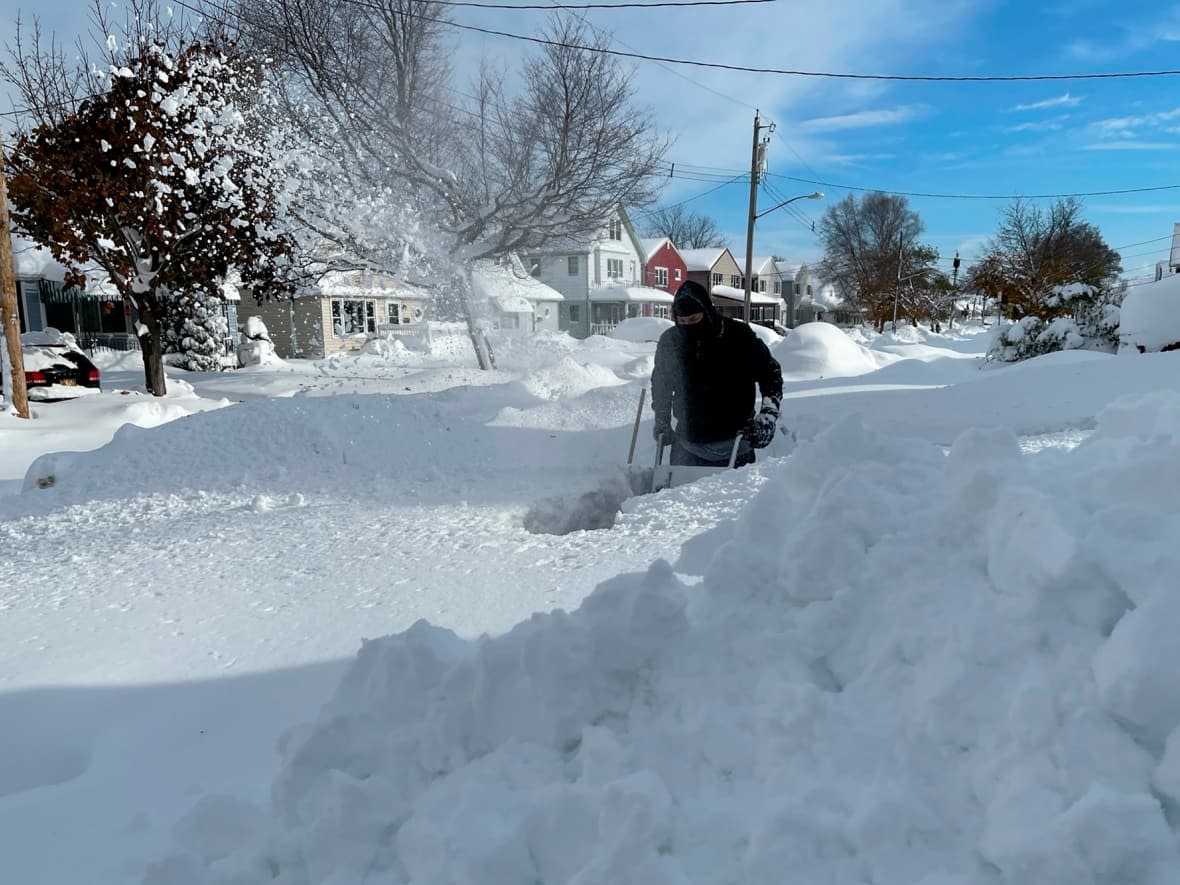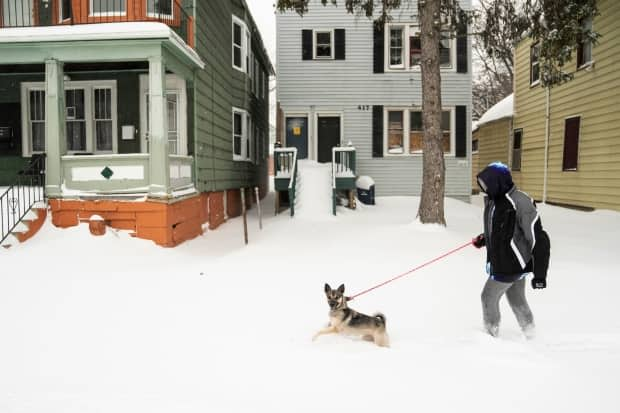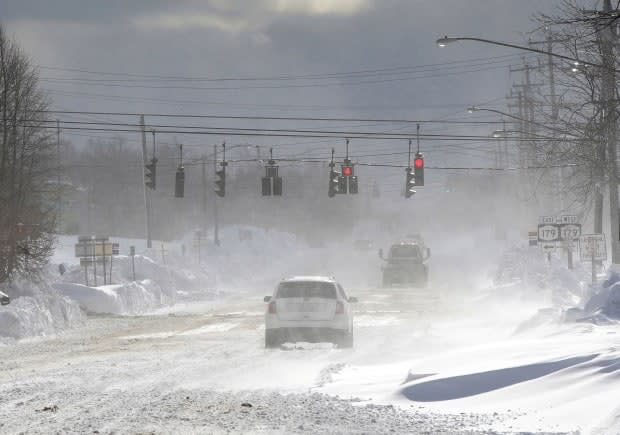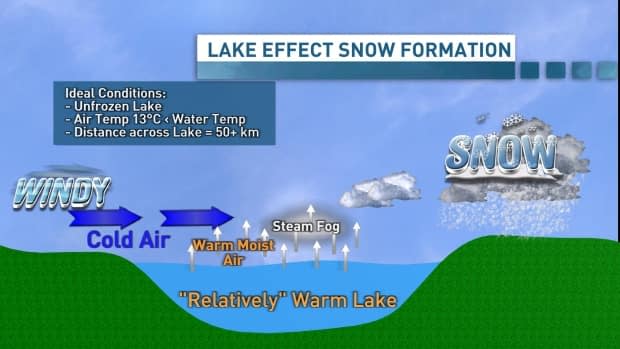Could Toronto get slammed by the same lake-effect snow that buried Buffalo? Not likely, say experts

It happens just about every winter. You're sitting at home in the Toronto area and you see images on television of Buffalo, N.Y., just to the south across Lake Ontario, getting buried under a major snowfall.
You look out your window and you wonder aloud, "Why isn't that happening here? We're not that far away."
Well, here's the explanation from meteorologists. They say Toronto can get what's known as "lake-effect" snow, but the city is highly unlikely to see the up to two metres that blanketed the Buffalo area over several days last week.
CBC News Meteorologist Colette Kennedy said a snowfall like that in Toronto would be "highly, highly unlikely" due to the city's location in relation to the Great Lakes. There would also have to be prolonged wind from a specific direction and all that would have to continue for hours, she added.
"Buffalo is situated between or close to two lakes, and at the end of each one. Therefore, it's not always a matter of the wind setting up across the north-south length of the lake but rather west-east or east-west," she said.
Lake-effect snow in the Great Lakes region occurs when cold air moves across the open water of the lakes.
The open water transfers heat and moisture to the air, the air rises, clouds are formed, they produce snow, and the snow falls downwind of the lakes, according to Environment Canada.

Kennedy said lake-effect snow is highly localized and it's important to note that it has to do with the combination of lakes and the wind more than a particular storm. The temperature difference between the air aloft and the lake water needs to be at least 13 degrees. The result is that the winds pick up the moisture from the lake, then release it as heavy snow.
"Once this is understood, it is very clear why certain areas get hit harder than others," she said.
In November, she said, the lake is not frozen, and there is an abundance of available moisture with warm air that can hold more content. That's what happened last week in western New York, she said.
"Most often, as in the case with this storm, it was a southwest wind going all the way across the warmest lake, which is Lake Erie, and it was prolonged," she said.
"This set-up for this event was very easy to see days in advance."
Kennedy said she began forecasting this snowfall about a week before it happened.
Toronto often sees lake-effect snow due to a northwest wind over Lake Huron and it can also be hit by the effect over the lower Great Lakes, which happened last week.

David Rodgers, senior meteorologist with Environment Canada, said lake-effect snow also fell on the weekend on parts of Ontario, including the Niagara region, Prince Edward County, Kingston, Wiarton and the Bruce Peninsula, and areas northeast of Georgian Bay up to North Bay.
He said Toronto is unlikely to get as much lake-effect snow as Buffalo because wind direction and wind temperature.
Lake-effect snow is not that common for the city of Buffalo, he said, adding it happens once or twice a winter.
"It's more rare for Toronto than it is for Buffalo. It's because of wind direction," he said.
The U.S. National Weather Service reported that the multi-day snow event dumped slightly more than 200 centimetres of snow on the Buffalo suburb of Orchard Park by Sunday afternoon.
U.S. President Joe Biden has granted a request to send federal aid to help state and local officials help clean up the massive amounts of snow that fell.



